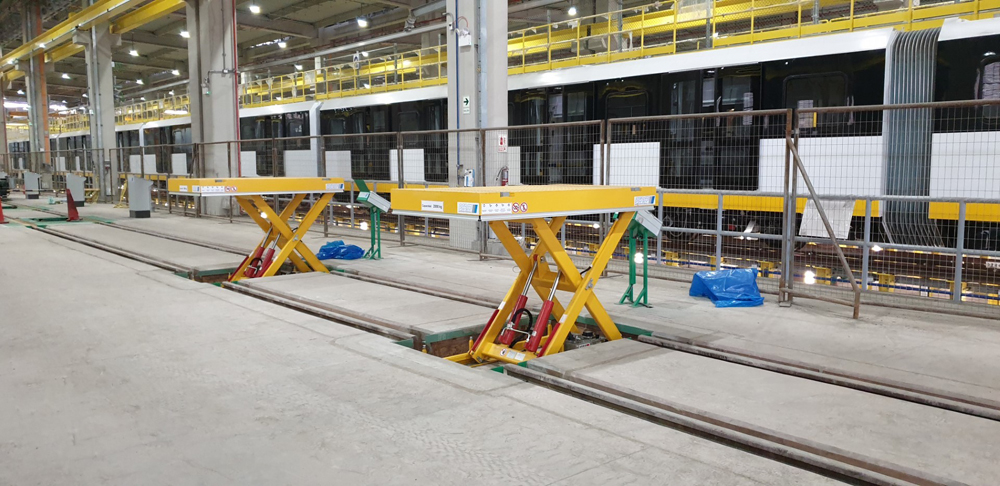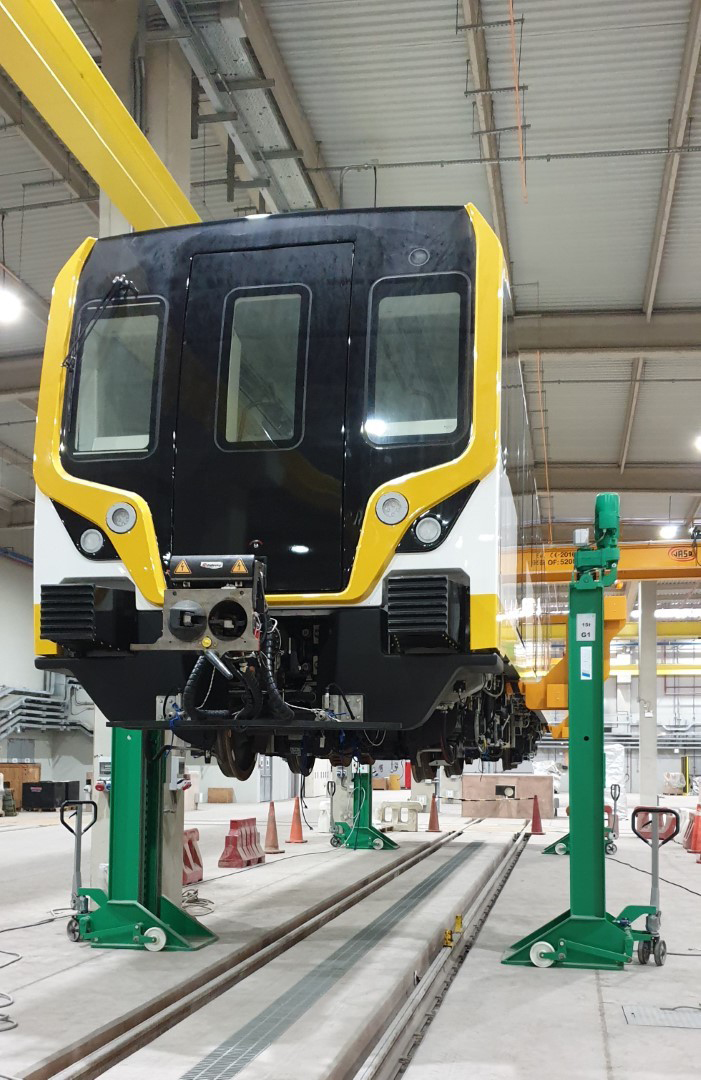Pfaff Verkehrstechnik completes contract for Metro Lima Peru
4 July 2022Pfaff Verkehrstechnik, part of CMCO Columbus McKinnon Corporation, has been commissioned by Hitachi STS, an Italian general contractor in the railway and local rail transport sector, to supply the plant components for workshop equipment for the new Santa Anita depot of Metro Lima in Peru.
The entire equipment, which Pfaff Verkehrstechnik has provided and now installed together with SIM IMPEX, includes an underfloor lifting system as well as bogie lifting stands, axle lifting systems (underfloor), mobile lifting jacks, manual turntables, lifting and turning equipment for bogie frames, auxiliary bogies and transport devices in large quantities.
The installation is now complete, and the plant will start operating this year.
Metro Lima is the only urban means of transport in Peru that does not contribute to air pollution because it uses electrical energy from hydroelectric power stations. With the opening of the northern section of line 1 in 2014, the metro, which is predominantly an elevated line, reaches a length of 34.6 km with 26 stations.
There are plans to expand the rail network to up to five lines, the second line is currently under construction.
Currently, six-carriage MB-300 trains from the Italian rolling stock vehicle manufacturer AnsaldoBreda are in service, as well as several Alstom Metropolis multiple units from the French manufacturer Alstom – a fast metro with high capacity: a train is 107 m long in total, which has to be taken into account in the plant engineering at the Santa Anita depot.
The underfloor lifting system from Pfaff Verkehrstechnik is designed for heavy trains of up to 280 tons with up to seven carriages and a total length of 120 m. The synchronisation of the wheel lifting platforms is controlled by the PLC control within a narrow tolerance range of +/- 5 mm, i.e. over the entire length of 120 m, the maximum height deviation of the lifting platforms is only 10 mm. Their cantilever design ensures that the removed bogies can be pushed underneath the lifted train for separate maintenance.
12 auxiliary bogies with a load capacity of 20 tons ensure the underfloor lifting system is not blocked for long by a lifted vehicle. After the bogies of the carriages have been dismantled, the carriage bodies are placed on the auxiliary bogies and pushed with them into a separate storage area. This means that the lifting stand is immediately ready for another vehicle. Mobile lifting jacks from Pfaff-Verkehrstechnik, each with a load capacity of 15 tons, are used at the Santa Anita depot to lift individual uncoupled carriages for their maintenance.
Several manual turntables with a diameter of 3200 mm have also been installed in the depot to move bogies weighing up to 8 tons between the hall areas. Maintenance and repair work on the bogies is carried out with underfloor bogie lifting stands from Pfaff Verkehrstechnik, which bring the bogies into the best ergonomic position up to a maximum lifting height of 1600 mm.
A lifting and turning system consisting of two lifting jacks with a crossbeam can turn the bogies, which are fixed by means of a clamping system, and rotate them to any desired position at the desired lifting height so that inspection work on the bogie frame can be carried out in an ergonomic position. In the service area, two underfloor axle racks (hydraulic lifting tables for loads up to 2 tonnes) raise individual axles to the desired working height.
Berlin-based SIM IMPEX – a Pfaff Verkehrstechnik sales partner that promotes sustainable mobility with innovative transport systems, especially in Latin American cities – was responsible for installing the systems. In the local markets, teams of specialised professionals ensure technical support and customer assistance during the installation of the components.
The installation and commissioning, which had to be carried out remotely due to the prevailing Covid-19 regulations, presented a major challenge for SIM IMPEX and Pfaff Verkehrstechnik as the main supplier of the facility, which now ensures more efficient maintenance and repair of entire metro trains, individual carriages, the bogies, axles, windows and doors.

